Explore your state's curriculum requirements
Australian Curriculum
“I recently attended a PD where we discussed the ongoing curriculum change. Teachers were feeling stressed about the work that was ahead of them and others shared their strenuous process of a complete overhaul, but I just sat back, feeling relaxed, knowing that everything was taken care of with Maths Pathway.”
Supporting Multiple Versions:
Both versions are fully supported:
- Australian Curriculum: Mathematics v9.0 (2023)
- Australian Curriculum: Mathematics v8.4 (2023)
Transitions between curricula are seamless, with no gaps in students’ sequence of learning.
Both curricula can even be used simultaneously with different classes in the same school.
For example:
- A school in WA could implement v8.4 matching the Western Australian Curriculum, in line with SCSA guidance.
- A school in QLD could treat 2024 as a transition year, implementing v9.0 with Year 9 but keeping v8.4 with Year 10.
- A school in SA could implement v9.0 with all year levels right away.
Full Alignment and Coverage
1. Explicit Teaching provides exposure to the key parts of each Achievement Standard
Pre-packaged Courses, complete with full Scope and Sequences you can customise for your school. Includes robust Course Documentation plus all the teaching and assessment resources you need.
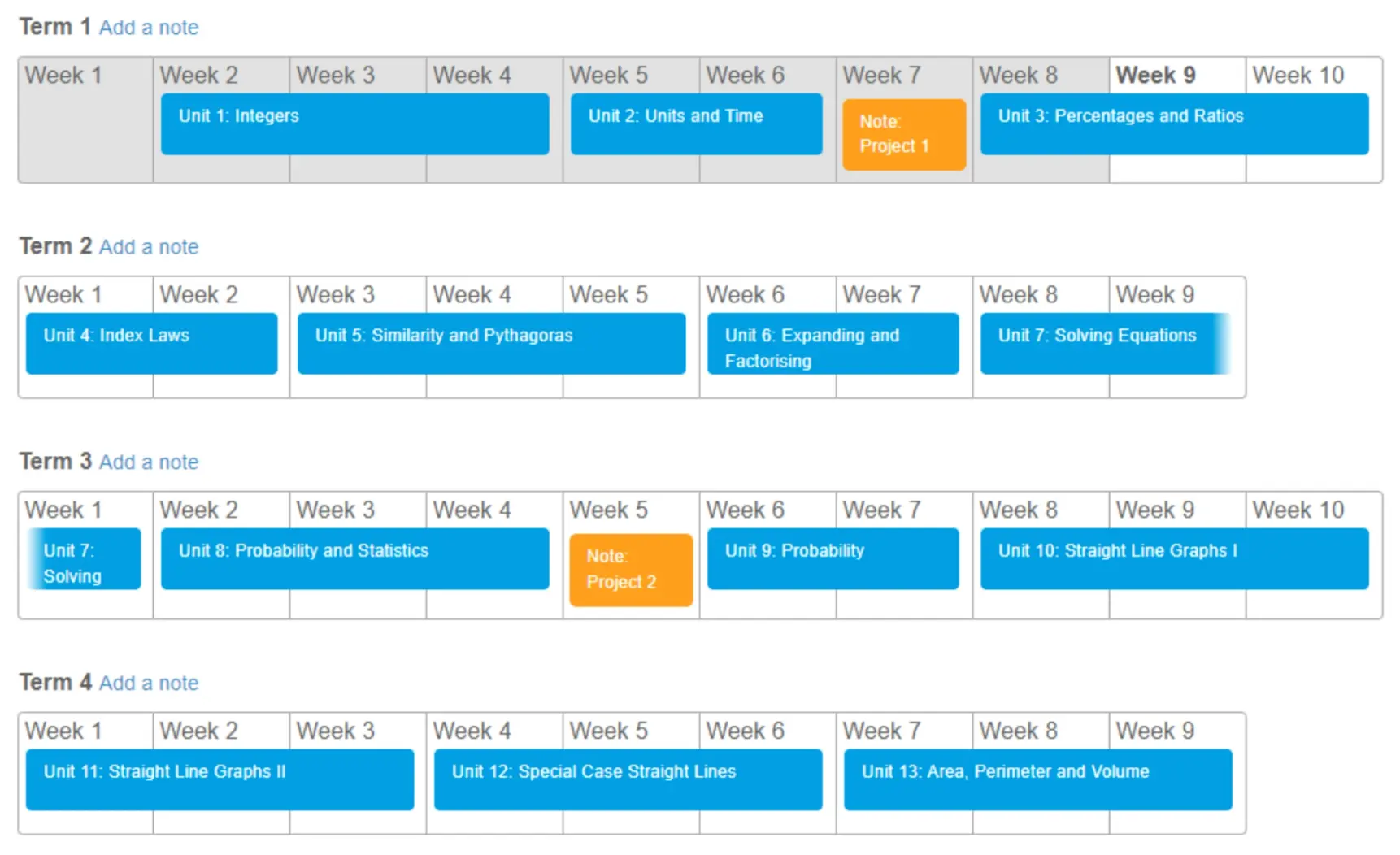
Download a course documentation sample
2. Student Projects provide experiences with the complex and unfamiliar
Week-long project assessments provide experiences required by the curriculum, such as conducting statistical investigations. They give students opportunities to engage in more complex and unfamiliar applications of mathematics, and prepare them for investigative assessments in higher years (such as PSMTs). These also provide variety in summative assessment modes throughout the semester, utilising rubrics based on Standards Elaborations.
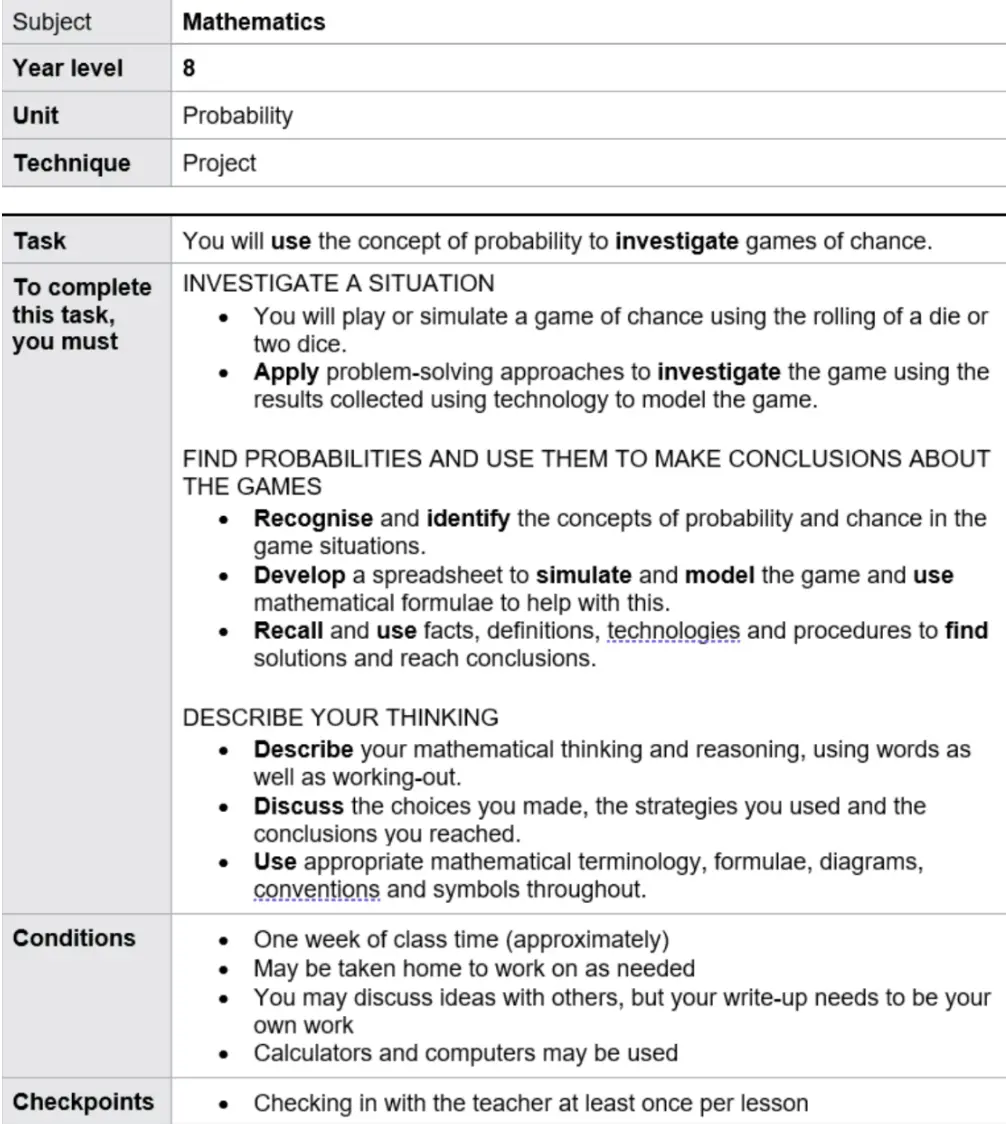
Download a project sample
3. Differentiated Learning provides mastery over every nook and cranny of the curriculum
An interconnected web of hundreds ‘modules’ powers students’ differentiated learning. Every aspect of relevant Content Descriptions and Achievement Standards is addressed by these modules, including from lower levels and 10A / Extension. This goes beyond just coverage or alignment – students attain deep mastery by filling in gaps and building connections (not just fluency practice). Modules integrate automatically into every unit of work at the simple push of a button.
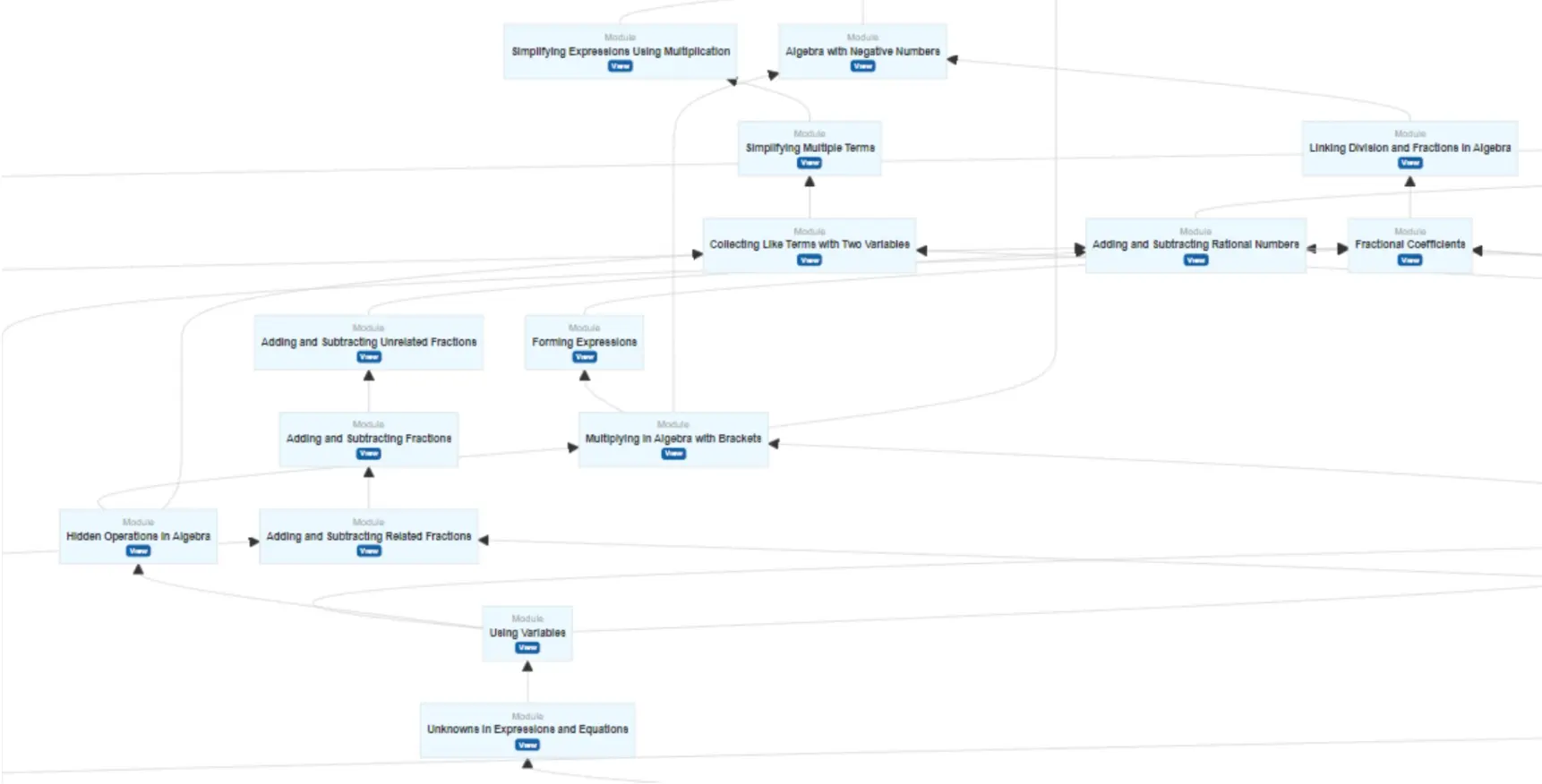
Download alignment spreadsheets
4. Granular Data provides attainment mapped to the curriculum standards
Formative and summative assessment data combine to form a full picture of each students’ attainment against the curriculum’s standards. All gaps and competencies become fully visible with a high degree of granularity. Combined with specialised tooling for assigning A-E grades using On-Balance Teacher Judgements, reporting against curriculum standards is a breeze.
Before
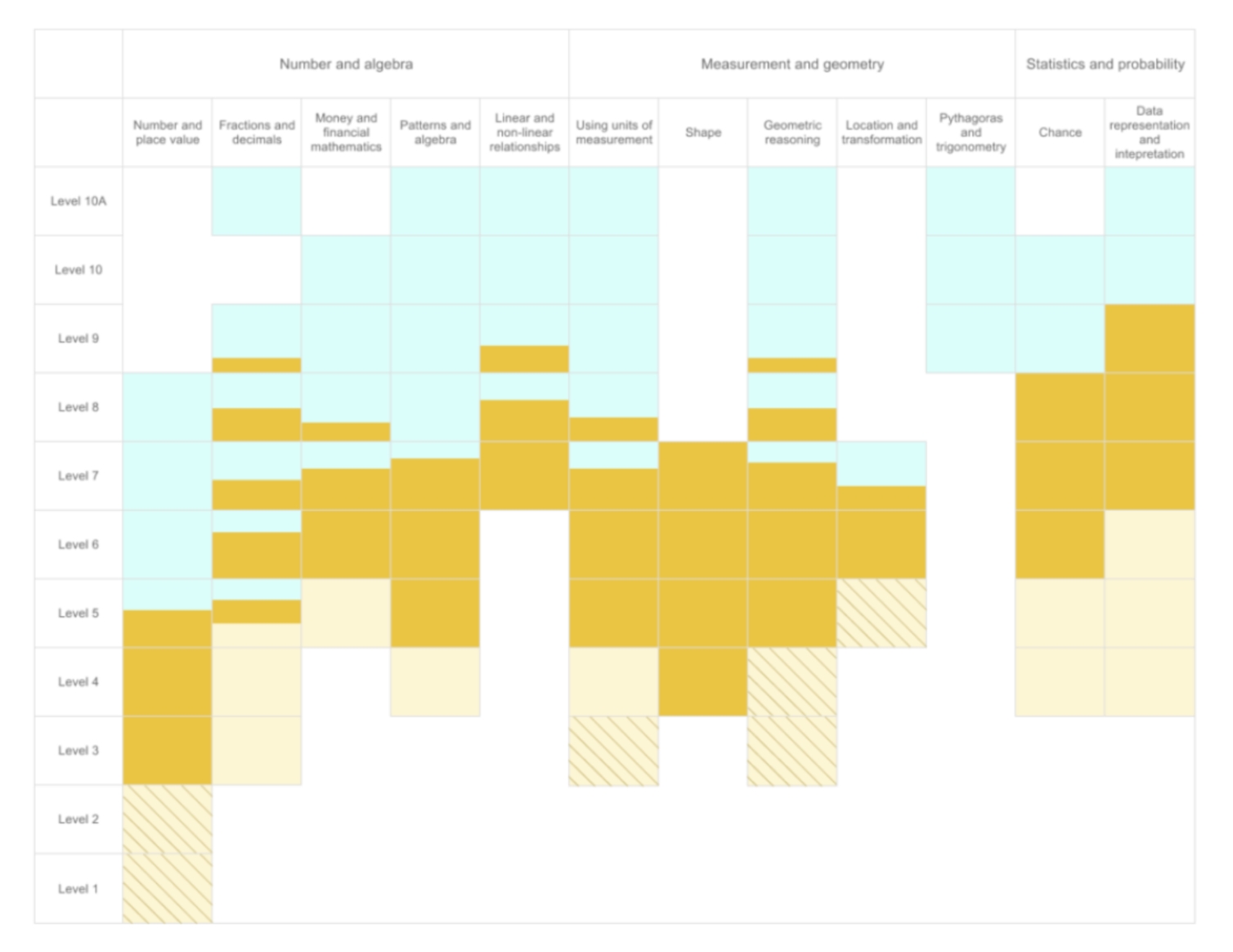
After
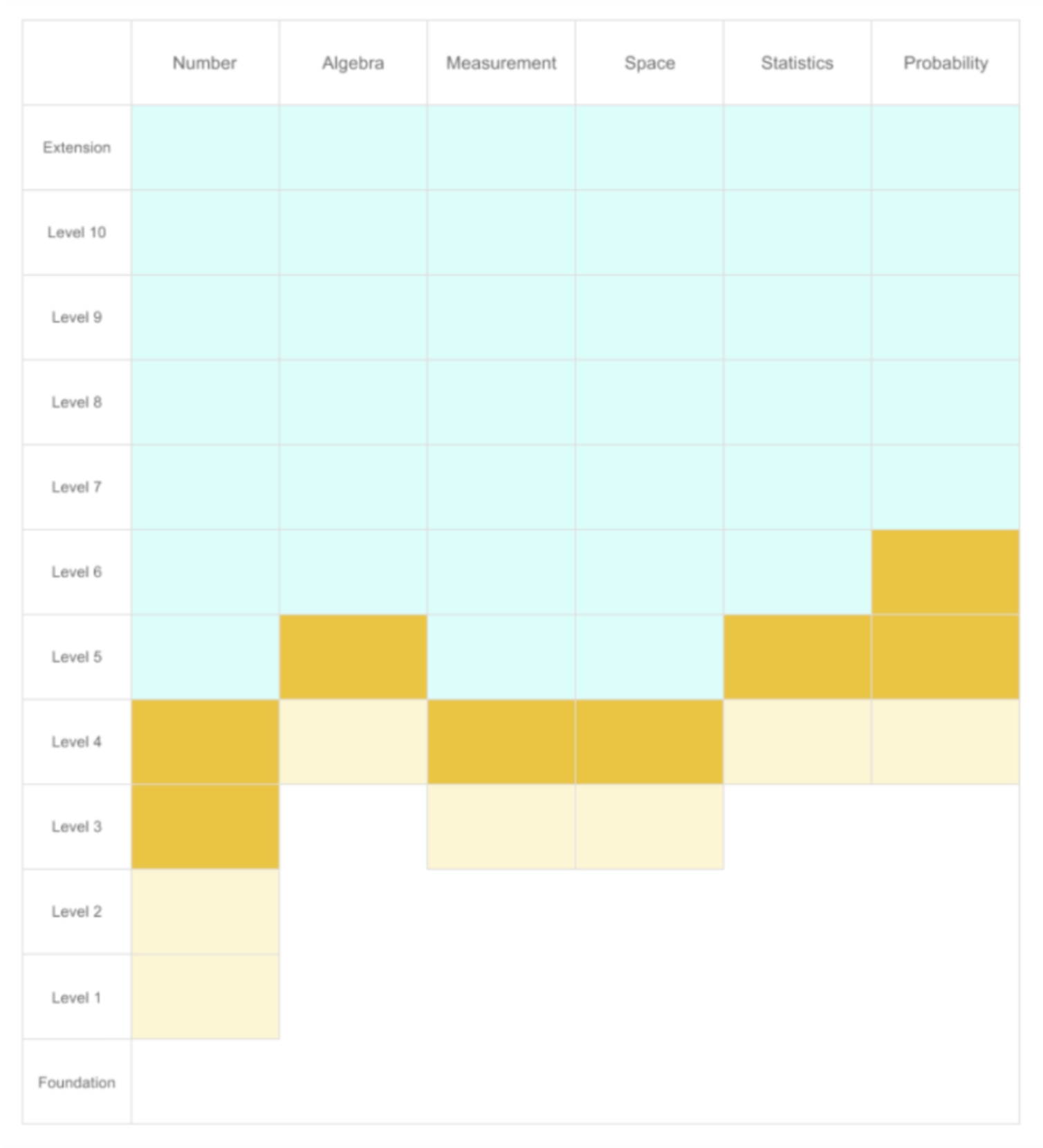
NSW Syllabus
“I recently attended a PD where we discussed the ongoing curriculum change. Teachers were feeling stressed about the work that was ahead of them and others shared their strenuous process of a complete overhaul, but I just sat back, feeling relaxed, knowing that everything was taken care of with Maths Pathway.”
Supporting Multiple Versions:
Both versions are fully supported:
- NSW Syllabus (New, 2024)
- NSW Syllabus (Old, 2012)
Transitions between curricula are seamless, with no gaps in students’ sequence of learning.
Both curricula can even be used simultaneously with different classes in the same school.
For example:
- A school in 2024 could implement the old Syllabus in Years 8 and 10, and the new Syllabus in years 7 and 9.
- A school in 2025 could implement the new Syllabus with all year levels.
Full Alignment and Coverage
1. Explicit Teaching provides exposure to the key parts of each Stage
Pre-packaged Courses, complete with full Scope and Sequences you can customise for your school. Includes robust Course Documentation plus all the teaching and assessment resources you need. For Stage 5, carefully chosen blends of Core and Path content are available in different courses, to prepare students effectively for Standard, Advanced or Extension in HSC.
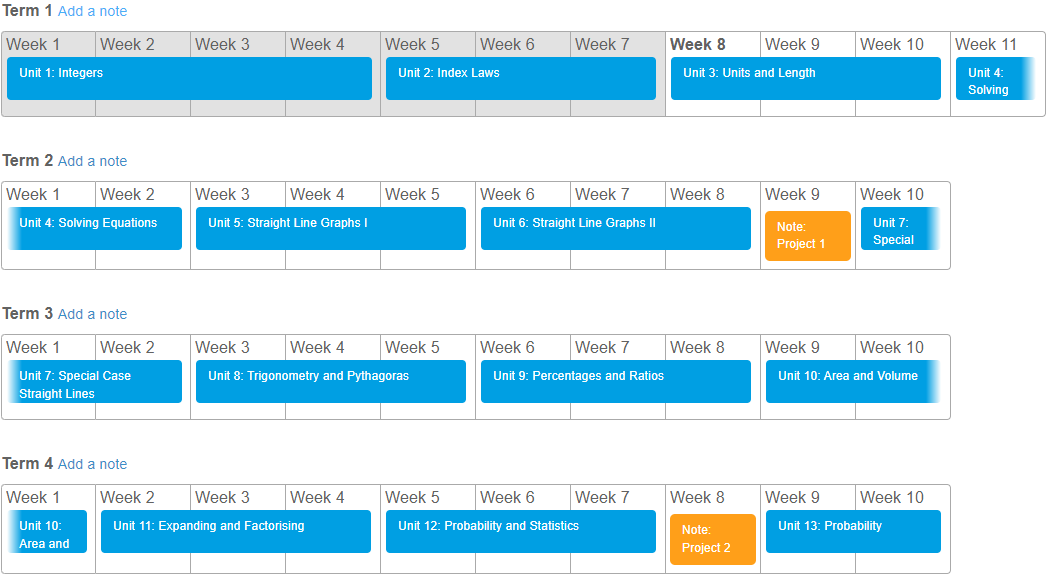
Download a course documentation sample
2. Student Projects provide experiences required by the Syllabus
Week-long project assessments provide key experiences required by the Syllabus, such as conducting statistical investigations and modelling probabilistic situations using simulations. These also provide a rubric-based assessment to provide a variety of summative assessment modes throughout the semester.

Download a project sample
3. Differentiated Learning provides mastery over every nook and cranny of the Syllabus
An interconnected web of hundreds ‘modules’ powers students’ differentiated learning. Every aspect of relevant Outcomes within each Stage is addressed by these modules, including from lower Stages, and all Core and Path content from Stage 5. This goes beyond just coverage or alignment – students attain deep mastery by filling in gaps and building connections (not just fluency practice). Modules integrate automatically into every unit of work at the simple push of a button.

Download alignment spreadsheets
4. Granular Data provides attainment mapped to the Syllabus standards
Formative and summative assessment data combine to form a full picture of each students’ attainment against the Syllabus standards. All gaps and competencies become fully visible with a high degree of granularity. Combined with specialised tooling for assigning A-E grades using On-Balance Teacher Judgements, reporting against Syllabus standards is a breeze.
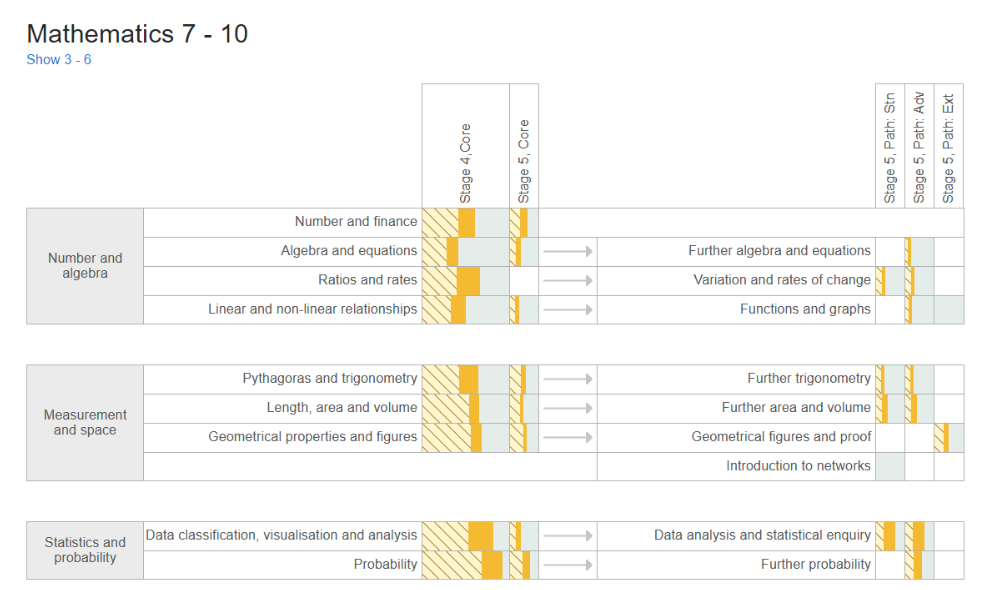
Victorian Curriculum
“I recently attended a PD where we discussed the ongoing curriculum change. Teachers were feeling stressed about the work that was ahead of them and others shared their strenuous process of a complete overhaul, but I just sat back, feeling relaxed, knowing that everything was taken care of with Maths Pathway.”
Supporting Multiple Versions:
Both versions are fully supported:
- Victorian Curriculum v2.0 (2024)
- Victorian Curriculum v1.0 (2017)
Transitions between curricula are seamless, with no gaps in students’ sequence of learning.
Both curricula can even be used simultaneously with different classes in the same school.
For example:
- A school in 2024 could treat 2024 as a transition year, implementing v2.0 with Year 9 but keeping v1.0 with Year 10. implement v9.0 with all year levels right away.
- A school in 2025 could implement v2.0 with all year levels.
Full Alignment and Coverage
1. Explicit Teaching provides exposure to the key parts of each Achievement Standard
Pre-packaged Courses, complete with full Scope and Sequences you can customise for your school. Includes robust Course Documentation plus all the teaching and assessment resources you need.

Download a course documentation sample
2. Student Projects provide experiences required by the curriculum
Week-long project assessments provide key experiences required by the curriculum, such as conducting statistical investigations and modelling probabilistic situations using simulations. These also provide a rubric-based assessment to provide a variety of summative assessment modes throughout the semester.

Download a project sample
3. Differentiated Learning provides mastery over every nook and cranny of the curriculum
An interconnected web of hundreds ‘modules’ powers students’ differentiated learning. Every aspect of relevant Content Descriptions and Achievement Standards is addressed by these modules, including from lower levels and 10A / Extension. This goes beyond just coverage or alignment – students attain deep mastery by filling in gaps and building connections (not just fluency practice). Modules integrate automatically into every unit of work at the simple push of a button.

Download alignment spreadsheets
4. Granular Data provides attainment mapped to the curriculum standards
Formative and summative assessment data combine to form a full picture of each students’ attainment against the curriculum’s standards. All gaps and competencies become fully visible with a high degree of granularity. Combined with wrap-up metrics for judging progression point levels, reporting against curriculum standards is a breeze.
Before

After

Chat to us about your school’s specific needs
Want to know more about how Maths Pathway can help you transition to the new curriculum?
Fill in the form to get start
Find out how your school can try Maths Pathway free this year
Are you from a Maths Pathway school? Contact our support team here [email protected]